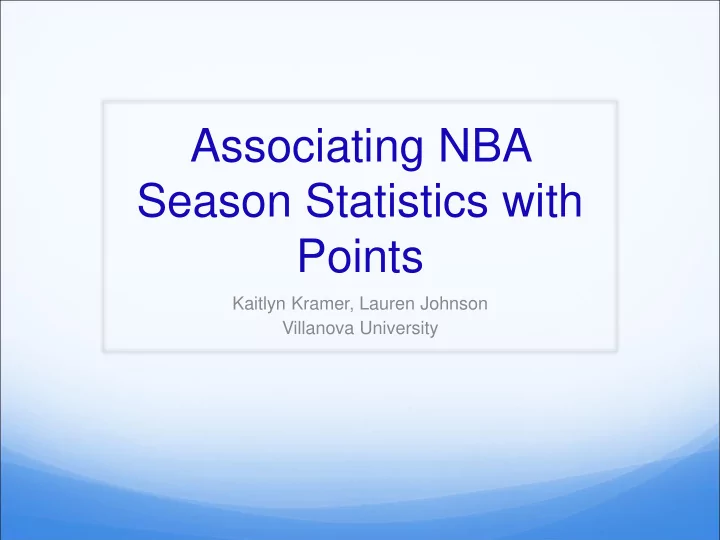

Associating NBA Season Statistics with Points Kaitlyn Kramer, Lauren Johnson Villanova University
Variables Points per game Opponent points per game Offensive rebounds per Opponent offensive game rebounds per game Defensive rebounds per Opponent defensive game rebounds per game Assists per game Opponent assists per game Steals per game Opponent steals per game Blocks per game Opponent blocks per game Turnovers per game Opponent turnovers per game Conference: East vs. West
Objectives Observe relationships between season averages of points per game based on other regressor variables Assess the validity of a final model using selected regressor variables Fitting model to test data before estimating the final coefficients
Cross-Validation Had 1086 observations in full data set Removed 10% of the observations (109) to set aside for test data 977 observations used in training data Test data will be used to asses validity of the final model
Analysis of Outliers
Response vs. Regressors Opponent offensive rebounds per game, opponent defensive rebounds per game and opponent assists per game also displayed non-linear relationships with points per game.
Regressors vs. Regressors
Re-expressions
Variable Selection Stepwise Collinearity Entry significance level of 0.10 Exit significance level of 0.05 Final Model: PTS~OppPTS+AST+OppAST+OppORB+TOV+STL+BLK
Test Data r=0.91 R 2 =0.81
Final Model
Conclusions The data behaved well in terms of what objectives we were trying to reach Residual analysis did not give us any trouble when testing for homoscedasticity Original assumption that there would be more team stats in final model was wrong Initial concerns of problems with collinearity between all of these variables were handled through the use of stepwise variable selection Were able to reach our goal of understanding more about the relationships between points per game and other game stats
Recommend
More recommend